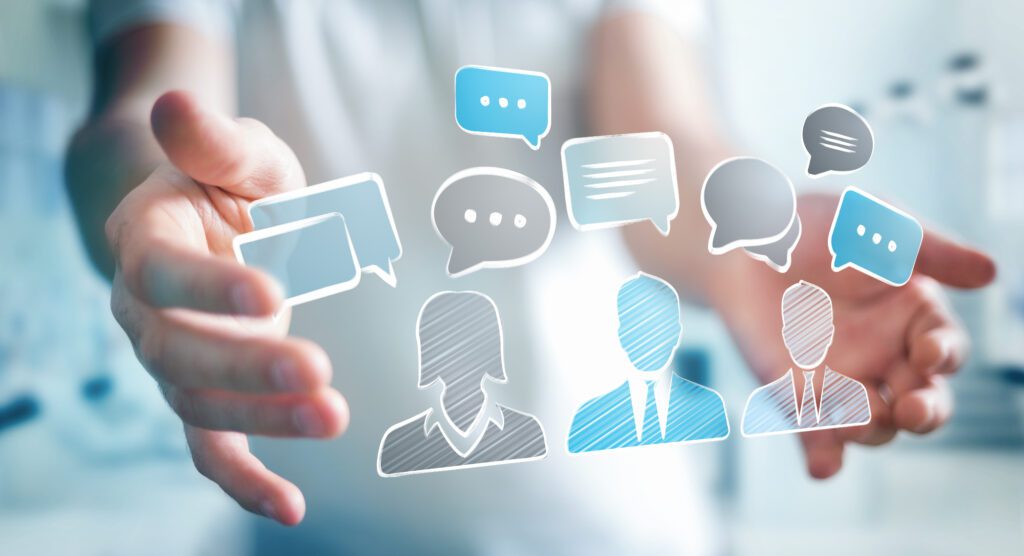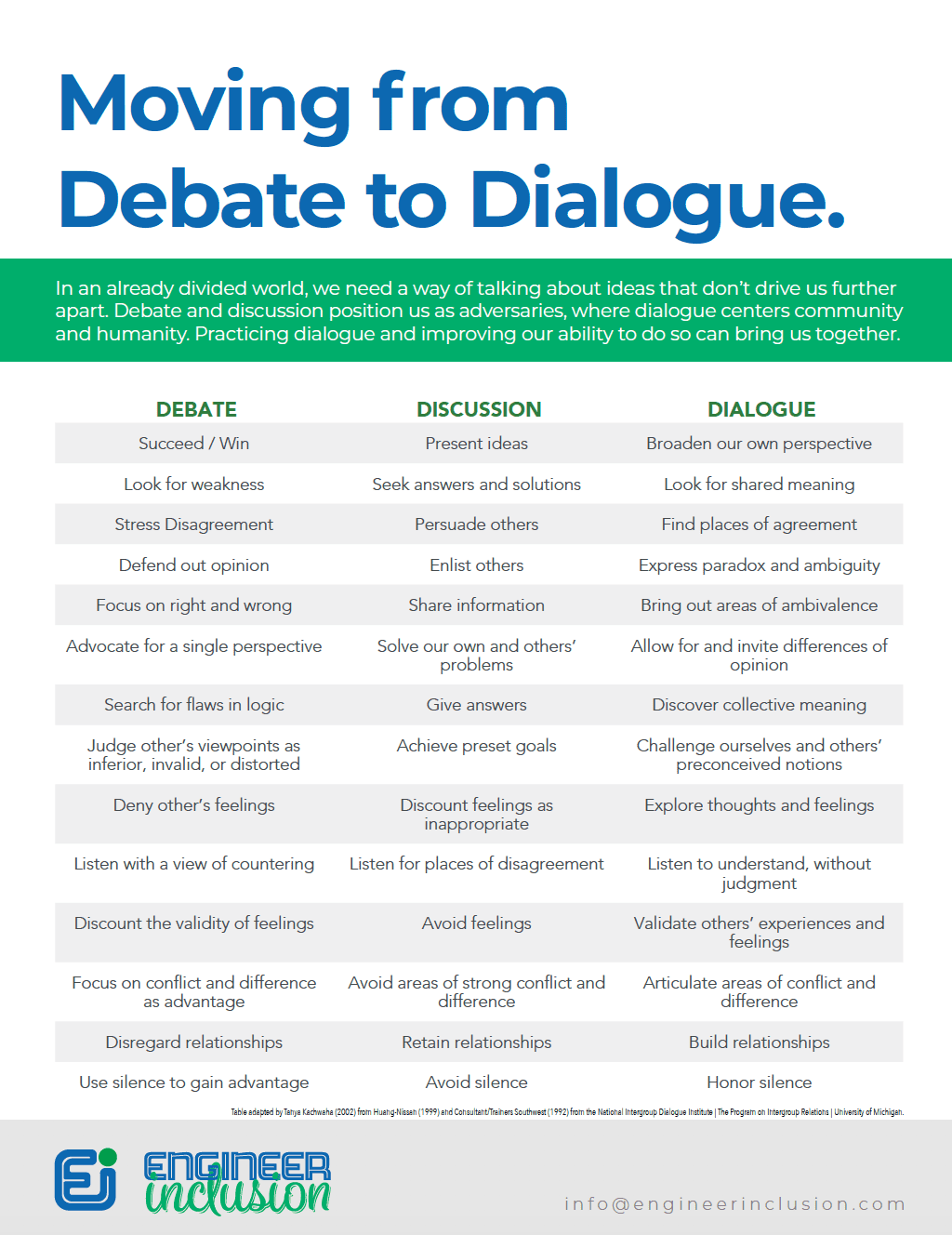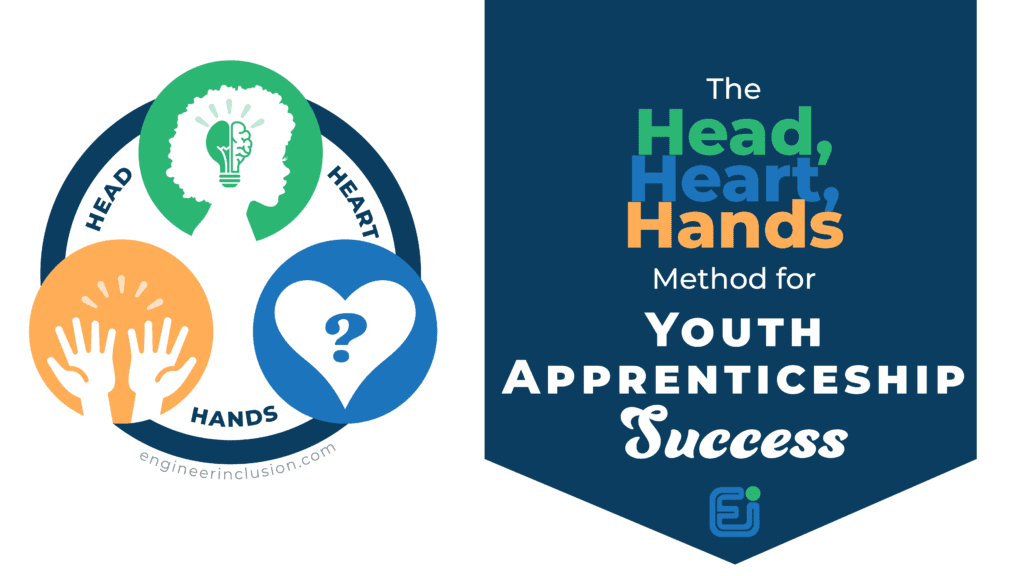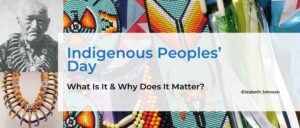In a world where conversations quickly turn into debates, it’s essential to rediscover the art of dialogue. Whether at family gatherings, social events, or even workplace meetings, how we converse can significantly impact our relationships and mutual understanding. This is where the transformative approach of moving from debate to dialogue comes into play, offering a pathway to deeper connections and empathy. Download a PDF at the end of this post.
Understanding Debate vs. Dialogue
Debate often sets us up as adversaries. It’s about winning an argument, emphasizing right and wrong, and countering the other person’s viewpoint. While debate can sharpen our reasoning skills, it’s not always conducive to building relationships or understanding.
Dialogue, on the other hand, is collaborative. It’s about exploring different perspectives, finding shared meaning, and listening to understand rather than to respond. Dialogue encourages us to express our thoughts and feelings openly and without fear of judgment, fostering a space where all voices are valued.
Transitioning to Dialogue
Here are practical steps to help you shift from a debate-focused approach to embracing dialogue in your conversations:
- Active and Empathetic Listening: Prioritize understanding the other person’s perspective. Listen not just to the words but also to the emotions and experiences behind them.
- Validate Experiences and Feelings: Acknowledge the feelings expressed by others. Validation is a powerful tool in showing empathy and respect, even when you don’t agree.
- Encourage Sharing with Open-Ended Questions: Use questions that invite deeper reflection and sharing. Questions like, “What led you to this view?” or “How does this topic affect you personally?” can open new avenues of understanding.
- Personalize Your Contributions: Share your perspectives through personal stories and experiences. This approach can make your contributions more relatable and less confrontational.
- Respectful Pauses and Reflection: Allow moments of silence for thought and contemplation. Sometimes the most profound understanding comes from quietly reflecting on what has been shared.
- Seek Common Ground: Identify areas of agreement or shared values. This can create a foundation for more constructive and less divisive conversations.

The Impact of Dialogue
Embracing dialogue does more than just change the tone of our conversations; it changes their heart. It moves us from contention to connection, fostering an environment where diverse viewpoints are not just tolerated but valued. Dialogue opens doors to learning, growth, and deeper relational bonds.
Conclusion and Call to Action
The journey from debate to dialogue is transformative. It’s about enriching our interactions and embracing the diverse tapestry of human experience and opinion. As we engage in conversations across different settings, let’s choose dialogue as our path to greater understanding and empathy.
Ready to transform your conversations and build stronger connections? Download the “Moving from Debate to Dialogue” guide now and start your journey towards more meaningful interactions.
DEBATE | DISCUSSION | DIALOGUE |
Succeed / Win | Present ideas | Broaden our own perspective |
Look for weakness | Seek answers and solutions | Look for shared meaning |
Stress Disagreement | Persuade others | Find places of agreement |
Defend out opinion | Enlist others | Express paradox and ambiguity |
Focus on right and wrong | Share information | Bring out areas of ambivalence |
Advocate for a single perspective | Solve our own and others’ problems | Allow for and invite differences of opinion |
Search for flaws in logic | Give answers | Discover collective meaning |
Judge other’s viewpoints as inferior, invalid, or distorted | Achieve preset goals | Challenge ourselves and others’ preconceived notions |
Deny other’s feelings | Discount feelings as inappropriate | Explore thoughts and feelings |
Listen with a view of countering | Listen for places of disagreement | Listen to understand, without judgment |
Discount the validity of feelings | Avoid feelings | Validate others’ experiences and feelings |
Focus on conflict and difference as advantage | Avoid areas of strong conflict and difference | Articulate areas of conflict and difference |
Disregard relationships | Retain relationships | Build relationships |
Use silence to gain advantage | Avoid silence | Honor silence |
Table adapted from Tanya Kachwaha (2002), Huang-Nissan (1999), Consultant/Trainers Southwest (1992)












